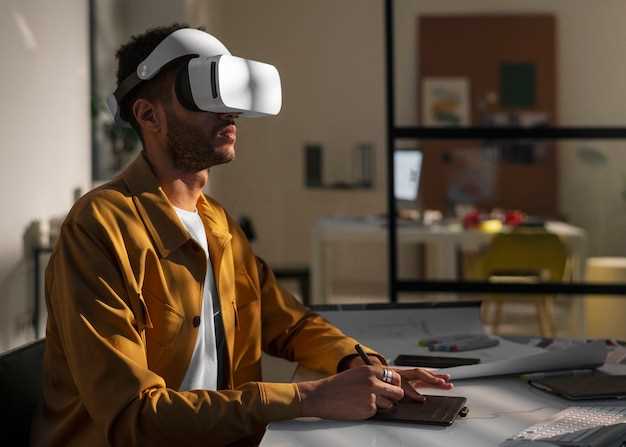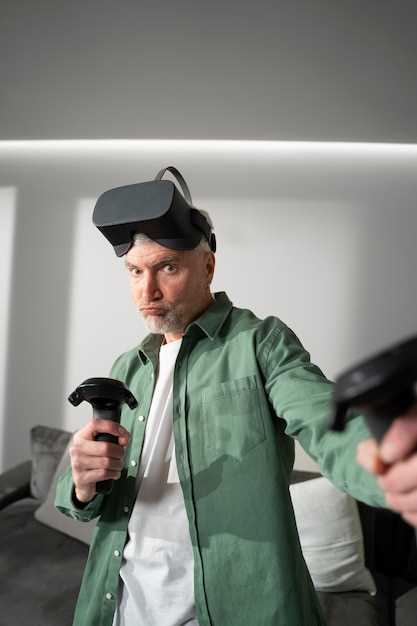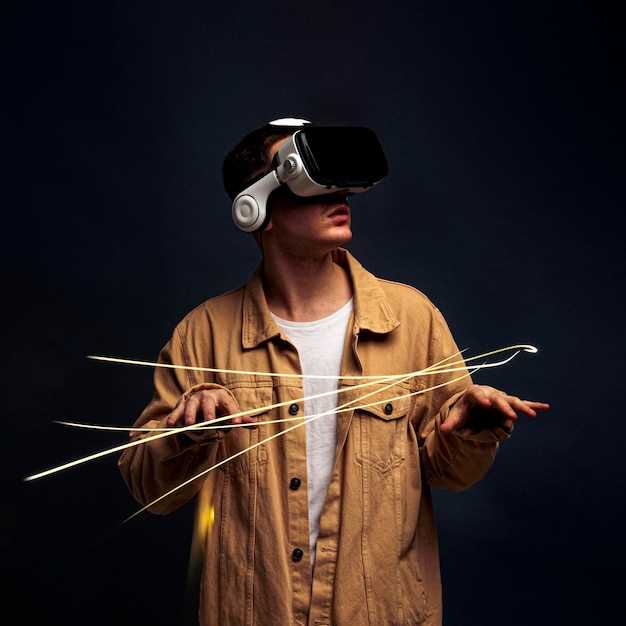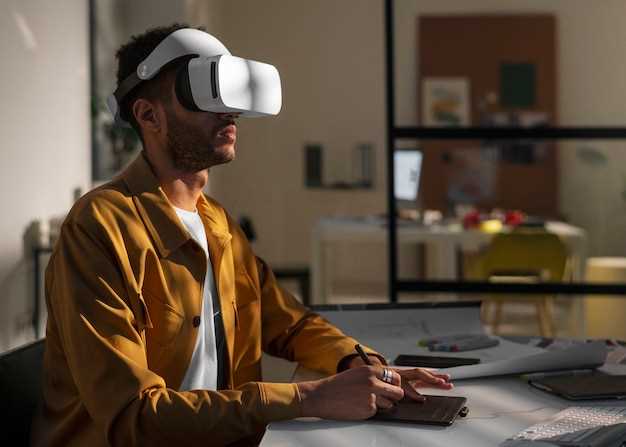Virtual reality is revolutionizing how businesses connect with their audience. It offers an immersive experience like no other. With the right approach, brands can engage customers in captivating ways. Imagine a world where you can step inside a product before purchasing. This not only enhances understanding but also builds excitement.
As technology evolves, so do the opportunities for interaction. Traditional methods are often overshadowed by the allure of virtual experiences. Customers crave engagement, and VR provides a platform for that. Companies are discovering that a memorable encounter can lead to brand loyalty.
Exploring various methods to incorporate this tech can yield incredible results. From events to promotions, the potential applications are vast. Brands can craft unique narratives that draw consumers in. With the right tools, marketers can create unforgettable moments that resonate long after the experience ends.
Imagine transporting your audience into a beautifully rendered world where they can interact with your offerings. The immersive nature of VR has the power to evoke emotions and create lasting impressions, making it an invaluable asset in the ever-competitive landscape of consumer engagement.
10 Creative Ways to Use VR in Marketing

Virtual reality holds immense potential for brands eager to innovate and engage. This technology can create immersive experiences, drawing customers into a vivid world. Imagine a landscape where your product comes to life. That’s the essence of this approach. It merges creativity with advanced technology, capturing the imagination of diverse audiences.
For companies, the goal is to stand out. Competition is fierce; every approach matters. When immersive storytelling is at play, the connection with the audience deepens. Consumers are not just observers; they become part of the narrative.
1. Product Demonstrations: Instead of traditional showcases, envision a scenario where users can interact directly with items before purchasing. Creating a virtual environment allows potential buyers to experience products firsthand.
2. Virtual Try-Ons: Fashion and beauty brands can benefit significantly by allowing customers to “wear” items virtually. Enhanced fitting rooms make the shopping experience not only fun but incredibly efficient.
3. Gamification: Utilize VR to create games that promote products. Introduce challenges or quests, incentivizing users to engage with the brand in playful yet compelling ways.
4. Immersive Storytelling: Switch the narrative delivery from standard ads to an engaging tale. In this setting, users find themselves as characters, elevating both emotional connection and brand recall.
5. Place-Driven Experiences: Take users on tours of destinations related to your brand. Imagine a travel agency applying VR to allow clients to explore exotic locales from their homes, enhancing interest and bookings.
6. Educational Content: Brands can provide training or tutorials using VR. This method allows users to learn in a hands-on manner, vastly improving retention and understanding.
7. Virtual Events: Host trade shows or product launches in virtual spaces. Attendees can interact, network, or participate in discussions, all while enjoying the comfort of their environments.
8. Customer Feedback: Gather insights through immersive surveys. When participants evaluate experiences in a virtual setting, the data collected is often richer and more detailed.
9. Building Community: Create shared experiences that enable users to connect. Virtual platforms foster community interaction, giving customers a sense of belonging and loyalty towards the brand.
10. Enhancing Brand Images: Position your business as an industry leader by utilizing cutting-edge technology. By embracing VR, brands not only modernize their image but also signal innovation and forward-thinking.
Incorporating these innovative features can redefine audience engagement. Embrace VR now and open doors to unexplored possibilities.
Innovative Approaches to Virtual Reality

Virtual reality (VR) possesses remarkable potential to captivate audiences. It can engage them in ways traditional media simply cannot. Brands are beginning to explore distinct avenues for this immersive technology. With VR, the possibilities are truly endless. New experiences can be created that resonate deeply with consumers, forging lasting connections.
One fascinating method involves storytelling. By crafting narratives within virtual environments, brands can transport users to entirely different worlds. This makes the experience more relatable. Additionally, this approach stimulates imagination and emotions simultaneously. The immersive nature of VR allows audiences to feel as if they are part of the tale.
- Live events in virtual spaces create unique user interactions.
- Gamification elements encourage participation and enhance the overall experience.
- Product demonstrations in 3D offer a hands-on feel.
Another innovative technique revolves around virtual showrooms. Here, customers can explore products in detail before making a purchase. This not only fosters confidence but also reduces the uncertainty associated with online shopping. By providing users with the opportunity to visualize items in their own space, the process becomes engaging and straightforward.
- Collaborations with influencers can amplify reach in virtual settings.
- The integration of social sharing options enhances engagement.
- Educational experiences provide value while promoting expertise.
Moreover, virtual reality experiences enable brands to gather insightful data. By analyzing user interactions, preferences become clearer, informing future endeavors. This data-driven approach aids in refining offerings and addressing community needs effectively, ultimately leading to higher satisfaction levels.
The world is witnessing a fascinating shift as VR continues to evolve. Brands willing to embrace this technology can differentiate themselves from competitors. New experiences await those daring enough to innovate and push boundaries, demonstrating the true power of immersive storytelling.
Immersive Product Demonstrations
Imagine stepping into a world where you can engage with products like never before. Virtual reality offers this exciting dimension. Brands can present their goods in a captivating manner. Potential customers become part of the experience, actively exploring features. It’s not just about watching a video or viewing images anymore.
Through immersive demonstrations, consumers can become familiar with products firsthand. This interaction fosters a deeper understanding of the item’s capabilities. Whether showcasing a new car or an innovative gadget, the experience becomes memorable. Instead of traditional ads, VR allows for a stimulating narrative, captivating users with vivid imagery and sound.
Picture a virtual environment that mimics real-life situations. Users can test products as if they were in a physical store. This hands-on approach reduces uncertainty and enhances confidence in purchasing decisions. By creating lifelike scenarios, brands can illustrate how their offerings fit into everyday life. Such engagement diminishes buyer hesitation and cultivates lasting impressions.
Moreover, facilitating these experiences can drive shared content on social platforms. Users are likely to share their immersive moments with friends and followers. As a result, word-of-mouth spreads organically, increasing reach and visibility. Additionally, brands can gather valuable feedback through interactive sessions. Insights gained from user interactions can refine future products and marketing tactics.
Embracing VR for product demonstrations doesn’t merely innovate engagement; it elevates the entire customer journey. Every interaction has the potential to foster loyalty and trust. In this way, brands continue to build connections with their audience long after the initial encounter. The future of showcasing products looks incredibly promising with immersive virtual experiences.
Virtual Showrooms for Enhanced Shopping
Imagine stepping into a world where shopping feels immersive and engaging. Virtual showrooms offer an innovative experience that captivates customers. They provide a platform for exploring products in a way that traditional retail cannot match. From the comfort of home, shoppers can discover and interact with items as if they were physically present.
This approach can stimulate a deeper connection with brands. Users can navigate through intricately designed spaces, viewing products from all angles. Adding interactive elements allows customers to personalize their experience, enhancing overall satisfaction. Each virtual environment can be tailored to reflect the essence of a brand, creating a memorable shopping journey.
With advanced technology, consumers can also visualize products in their own surroundings. For instance, home décor items can be placed virtually in a customer’s living space, enabling them to see how each piece fits their personal style and preferences. Such capabilities bridge the gap between online and in-store shopping experiences, fostering a seamless transition for users.
The potential to host exclusive virtual events further engages audiences. For example, brands can unveil new collections through virtual launch parties, inviting customers to attend from anywhere in the world. These events not only create excitement but also build community, as shoppers connect with each other and the brand, deepening their loyalty.
As technology continues to advance, virtual showrooms will evolve, offering even more captivating experiences. By integrating sophisticated features such as augmented reality and AI, businesses can create environments that cater specifically to individual preferences. In a landscape where consumer expectations are ever-increasing, this innovation sets brands apart and drives sales through engaging interaction.
Interactive Brand Storytelling Experiences
Engaging users through immersive narratives creates a lasting connection. These experiences pull audiences into the heart of the brand. Instead of simply presenting information, they invite individuals to explore. This method captivates attention and fosters emotional ties that traditional advertising often lacks.
Imagine a world where consumers don’t just read about a product but actually experience the story behind it. With immersive storytelling, brands can transport users into fantastical environments, allowing them to interact with characters and settings. Through this dynamic approach, folks feel as if they are part of something larger. They don’t just observe; they participate.
By integrating interactivity into their storytelling, marketers can effectively highlight brand values. Users are motivated to explore various pathways and choices within the narrative, enhancing retention. When a person chooses a specific path, it personalizes their experience. This makes the connection between the consumer and the brand much stronger.
Effective storytelling in immersive formats leads to memorable moments. Users recall feelings and experiences rather than mere product details. Brands that successfully implement this strategy often see increased loyalty and engagement. People appreciate when they become part of the journey rather than being passive listeners.
Thus, crafting engaging narratives using virtual reality can redefine customer interactions. Not only does it elevate brand visibility, but it also promotes community building among consumers. In an era where attention spans are fleeting, unique experiences ensure brands stand out. Investing in this storytelling technique paves the way for deeper emotional connections and innovative engagement.
Engaging Customers Through VR Solutions

Virtual reality opens up an exciting realm for connection. It allows brands to immerse their audience in unique experiences. Rather than merely presenting products, companies can envelop customers in a world that tells a story. This immersion fosters deeper emotional responses and memorable interactions. Customers are increasingly drawn to experiences that captivate their senses.
By incorporating VR, businesses can create scenarios that resonate personally. Imagine a customer exploring a brand’s origin through a virtual journey. Think about how powerful it would be to walk through a vineyard, tasting the essence of a fine wine. This kind of engagement captures imagination and stirs curiosity. It’s not just about seeing; it’s about feeling and experiencing.
Moreover, VR creates new opportunities to showcase products in innovative ways. For instance, furniture retailers allow users to visualize items in their own homes. Instead of relying solely on imagination, customers can witness how a piece fits into their lives. This tangible connection bridges gaps and enhances decision-making processes. As such, the interaction becomes more personal and purposeful.
Furthermore, events infused with virtual experiences can captivate larger audiences. Live product launches can reach global participants without physical barriers. Enthusiasts can join virtually, feeling as if they are part of the action. By breaking geographical limits, brands can elevate their presence and establish lasting relationships. Every interaction forms a memory, engraining the brand deeper into customers’ minds.
In conclusion, VR solutions present an unparalleled opportunity for engagement. They facilitate rich narratives and foster genuine connections. As brands continue to explore these innovative avenues, the potential to captivate audiences expands. The future of interaction is not only about being seen but is also about being felt. Every experience leaves an indelible mark on customer minds and hearts.
Personalized Advertising Campaigns
In today’s digital realm, individualized experiences are paramount. Consumers crave products that resonate with their specific desires. Virtual reality can amplify this by immersing users in tailored experiences. Imagine stepping into a world where every detail speaks to you.
Such immersive environments can showcase brands like never before.
- Enhanced engagement through interactive elements.
- Emotional connections fostered by personalized narratives.
- In-depth data analysis for precise targeting.
By leveraging user behavior and preferences, businesses can create memorable and impactful interactions that not only capture attention but also convert interest into loyalty.
For instance, VR experiences can transport customers into environments where they can visualize products in their own context, whether it’s furniture in their living room or clothing on their virtual selves, leading to an unforgettable shopping journey.
- Gather user data responsibly to tailor experiences.
- Design virtual worlds that reflect diverse lifestyles.
- Offer simulations that allow for hands-on product interactions.
As brands embrace this technology, they not only enhance consumer satisfaction but also elevate their own market position, making each advertisement a unique event that leaves a lasting impression.
Virtual Events and Live Experiences
Engaging audiences in immersive environments can redefine interactions. Utilizing technology bridges gaps between brands and their consumers. People crave connection, even from afar. Virtual events allow for exciting experiences that captivate users in unprecedented ways. Architectural spaces and digital landscapes can be designed to fit specific themes and narratives, enhancing the overall feel.
By merging interactivity with entertainment, companies can create memorable moments that resonate deeply with attendees. Imagine hosting a product launch in a fully immersive virtual space where potential customers can explore every detail at their own pace. This approach not only showcases offerings but also fosters a sense of community, encouraging laughter, conversation, and shared enjoyment.
| Type of Event | Key Benefits |
|---|---|
| Product Launch | Instant global reach and heightened engagement. |
| Conferences | Networking opportunities without geographical constraints. |
| Workshops | Interactive learning experiences that cater to all skill levels. |
| Trade Shows | Immersive exhibitions that highlight product features effectively. |
| Online Festivals | Entertainment that brings people together, fostering community. |
As virtual experiences continue to advance, the potential to engage audiences grows exponentially. From gamified workshops to social gatherings, the possibilities are limitless. Such platforms encourage participation, allowing users to contribute in real-time, further enhancing the sense of belonging.
Training and Simulations for Sales Teams
Harnessing immersive technology can significantly enhance the skills of sales personnel. Virtual reality offers unique opportunities for interactive learning. It engages team members in realistic scenarios, allowing them to practice their techniques safely. This approach builds confidence and boosts performance. Instead of traditional methods, a more engaging experience awaits.
Imagine a setting where sales reps can navigate challenging conversations with virtual customers. They can experiment with different pitches and receive immediate feedback. Such simulated environments provide a safe space for experimentation. Mistakes become lessons without real-world consequences. Each interaction is a chance for growth and improvement.
Moreover, these simulations can be tailored to specific products or services. By doing this, training becomes relevant and focused. Sales teams can immerse themselves in scenarios that reflect their actual challenges. This targeted practice helps in mastering effective strategies, ultimately leading to increased sales success.
Incorporating VR into training creates a memorable experience. It promotes retention of information through active participation. As team members engage in these exercises, they develop better communication skills. They learn to read body language and adjust to different customer needs. Overall, the blend of entertainment and education opens new avenues for skill development.
Equipping sales teams with state-of-the-art tools directly impacts results. The investment in this technology exceeds mere training; it’s a commitment to long-term growth. By prioritizing this innovative approach, companies position themselves ahead of competitors. The evolution of training methods showcases a forward-thinking mindset, essential in today’s fast-paced market.
Community Building Through VR Platforms
Establishing connections among individuals has taken on new dimensions thanks to immersive technology. The virtual environment acts as a bridge, allowing participants from diverse backgrounds to gather in shared spaces. Through interactive experiences, users engage in genuine interactions. This fosters a sense of belonging that traditional platforms often struggle to achieve.
In virtual reality, users can collaborate, play, and learn together. They participate in events that resonate with their interests and passions. This immersive atmosphere encourages communication that feels more authentic. When people come together in these virtual realms, they forge bonds that extend beyond the digital experience.
Platforms tailored for virtual communities allow organizations to create engaging experiences. Users can attend live events featuring renowned speakers or participate in workshops. Such events create an engaging atmosphere that fosters networking, collaboration, and shared knowledge, enabling participants to grow both personally and professionally. The immersive quality of VR helps break down geographical barriers, allowing individuals to connect regardless of their physical location.
Brand loyalty flourishes in these environments, as users become part of vibrant communities. They exchange ideas, share experiences, and support one another, resulting in long-lasting relationships. By nurturing these connections, organizations not only enhance their reputation but also create advocates who genuinely believe in their mission. The impact of these interactions can significantly influence brand perception within the wider market.
Ultimately, harnessing virtual reality for community building empowers organizations to create deeper connections. These relationships are not merely transactional; they are rooted in shared experiences and mutual growth. As technology evolves, the potential for richer, more meaningful interactions continues to expand, promising a future where community is human-centered, inclusive, and joyous.
Video:
Transform Your Training Strategy with Google Virtual Reality and Productivity Tools (Cloud Next ’18)
Transform Your Training Strategy with Google Virtual Reality and Productivity Tools (Cloud Next ’18) by Google Workspace 1,470 views 6 years ago 22 minutes
Q&A:
What are some examples of brands currently using VR in their marketing strategies?
Many brands have successfully integrated VR into their marketing campaigns. For instance, IKEA created a VR app that allows customers to visualize how furniture would look in their homes before making a purchase. Similarly, Nike has implemented VR experiences at their stores, enabling customers to virtually try on shoes. These examples show how VR can enhance customer engagement and decision-making.
How can VR improve customer engagement in marketing campaigns?
VR improves customer engagement by providing immersive experiences that captivate audiences. By allowing customers to interact with products or services in a virtual environment, brands can create memorable experiences that leave a lasting impression. For instance, a travel agency might use VR to take potential customers on a virtual tour of destinations, making them feel as if they’re already experiencing the trip. This engagement can lead to increased interest and ultimately higher conversion rates.
Is incorporating VR into my marketing strategy expensive?
While the initial investment for VR technology and development can be significant, costs have been decreasing as the technology becomes more mainstream. Many companies offer scalable solutions that cater to various budgets. The key is to evaluate your marketing goals and resources. Smaller brands can start with simpler VR experiences, such as 360-degree videos, which can be more affordable and still effective in enhancing customer engagement.
What industries can benefit the most from VR marketing strategies?
Several industries can leverage VR marketing effectively. The real estate sector can use VR to offer virtual property tours, while the automotive industry can provide immersive test drives of their latest models. Additionally, fashion brands can utilize VR to allow customers to virtually try on clothing. Industries such as travel, education, and gaming are also well-positioned to benefit from creative VR applications, as they align perfectly with audience expectations for immersive experiences.
How can I measure the success of my VR marketing campaigns?
Measuring the success of VR marketing campaigns can be done through several key performance indicators (KPIs). You can track metrics such as engagement rates, time spent in the VR experience, and interaction levels with virtual elements. Additionally, post-experience surveys can help gather qualitative feedback on customer satisfaction and interest level. Combining these metrics with traditional marketing analytics, such as conversion rates and sales data, will provide a comprehensive view of the effectiveness of your VR campaigns.
How can virtual reality enhance customer engagement in marketing?
Virtual reality (VR) enhances customer engagement by creating immersive and interactive experiences that capture the audience’s attention. By allowing customers to experience products or services in a virtual environment, brands can provide a deeper understanding and emotional connection. For instance, a travel agency could use VR to let potential customers explore a destination before booking. This not only heightens interest but also boosts confidence in purchasing decisions, leading to higher conversion rates. Additionally, VR experiences can be shared across social media platforms, expanding the reach and impact of the marketing effort.
What are some examples of brands successfully using VR in their marketing strategies?
Several brands have successfully integrated VR into their marketing strategies to stand out in competitive markets. For instance, IKEA launched the IKEA Place app, which allows users to visualize how furniture would look in their own homes using augmented reality, merging VR with practical utility. Another compelling example is Coca-Cola, which created a VR experience that transported users to a winter wonderland, enhancing the emotional narrative associated with their brand during the holiday season. Similarly, Mercedes-Benz used VR technology at auto shows to give potential customers an immersive tour of their new car models. These examples highlight how VR can captivate audiences, evoke emotions, and ultimately drive sales by providing unique and memorable experiences.
